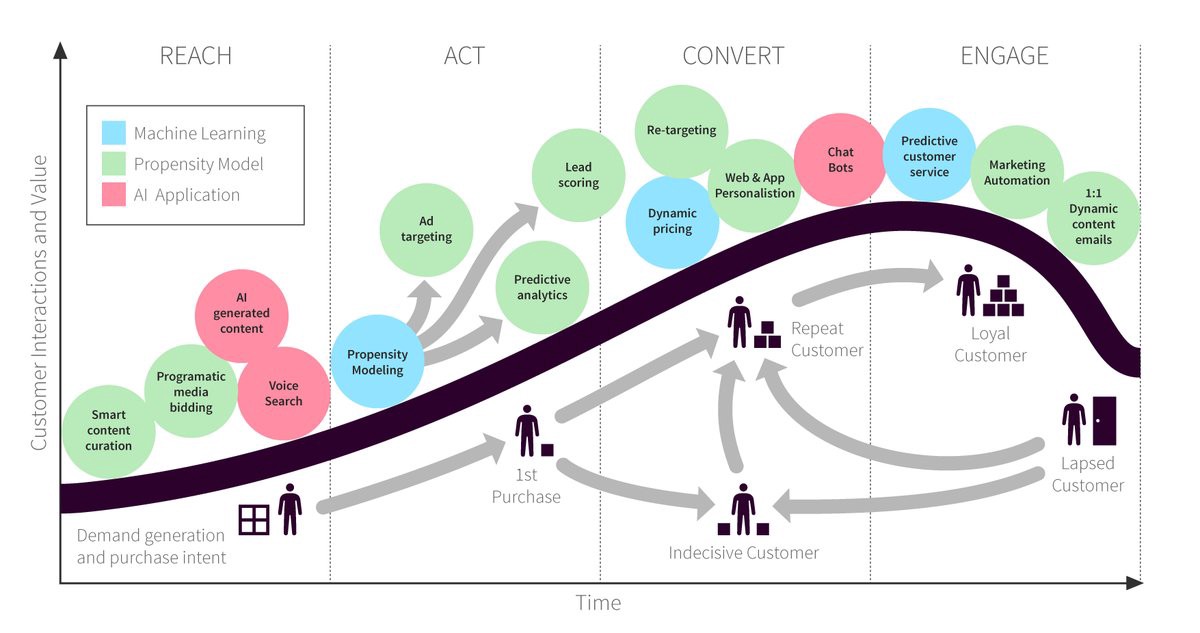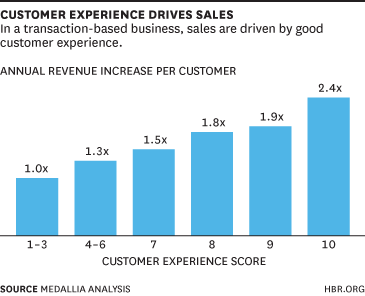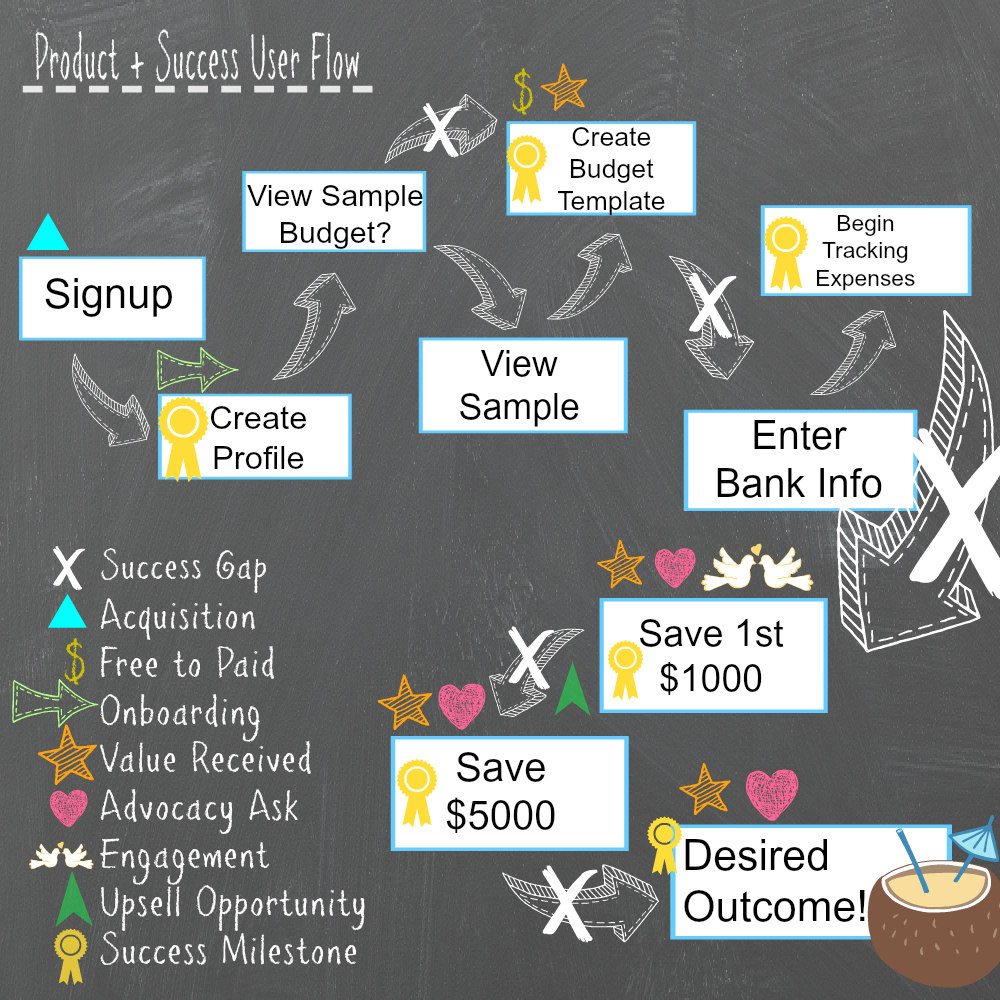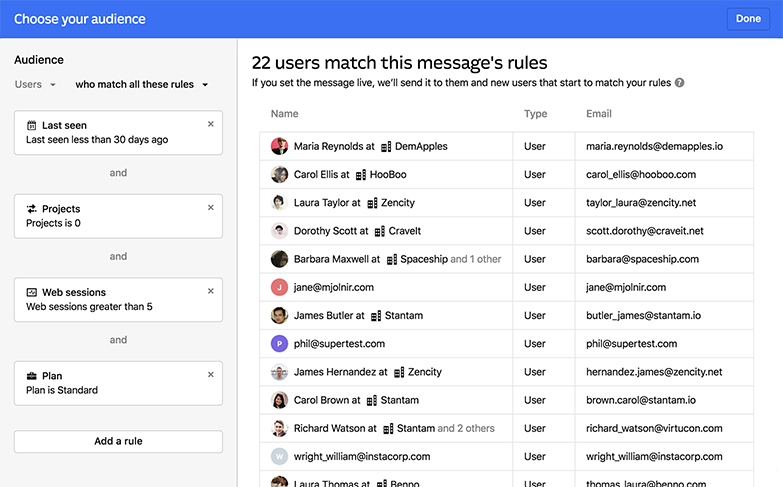
It sounds simple — but it’s not easy: talking with your customers through every stage of the customer lifecycle. There’s been a lot said about the value of talking to your customers before you build the product to ensure market fit, but very little said about continuing the conversation past marketing and past the sale.
Why do I know talking with your customer is *the* very best predictor of, and contributor to, SaaS business growth? Because creating a constant flow of customer feedback, input, and conversation makes Customer Experience (CX) better.
Multiple studies show that CX leads to revenue growth.

CX also drives brand advocacy (aka. word of mouth), creating a virtual sales army, which leads to:
Decreased cost-to-acquire.
“Customers with the best past experiences spend 140% more than those with the poorest past experiences.” — Harvard Business Review
Increased customer lifetime value.
“Customers with the best past experiences have a 74% chance of remaining a member for at least another year.” — Harvard Business Review
Plus, qualitative customer research leads to making data-informed decisions that streamline product management, ensure customer success, and make marketing and sales far more efficient.
In short, as Laura Klein, author, VP of product, and co-founder of Users Know says,
“User research saves time. Period. When you actually understand what your user needs before you build things, you have a much lower chance of having to go back and rebuild everything after shipping something that nobody uses.”
But what does “talking with your customer” really mean?
It’s not like you’re inviting them over for tea and cookies every week for a casual catch-up (though that would be awesome, and you should do that and invite me).
When we say “talk to your customers,” or “listen to your customers,” I usually mean getting on the phone with them (or better, meeting up with them in person). But, it can also mean sending surveys that include long-form response fields, or building quicker in-app surveys into your roadmap to uncover moments of friction.
And, of course, if you’re earlier in your business, there’s the Lean approach of interviewing dozens of target customers in person and over the phone — groundwork that helps founders (and product developers and marketers) form better hypotheses around what will deliver the best product-market fit.
There’s also user testing.
These are all valid ways of listening to your customers. But I’d like to advocate for doing all of these things and going several steps further. I’m talking about combining all of the above and adding genuine conversations to the mix.
It’s just not input. It’s just not feedback. It’s getting to know your customers as human beings and building relationships with them that drive positive CX far more powerfully than any of these elements could do alone.
So much has been written about interviewing customers prior to developing products that I’d like to focus on how to keep communication lines open after the launch, after customer acquisition, starting with onboarding.
Track more than actions, during and after onboarding

The first key to ensuring communication stays clear and open is to observe your customers. We communicate far more by our actions than we do verbally, and tracking the actions of your customers, especially (but not limited to) during onboarding can tell you the truths you need to hear.
Tracking customer behavior during onboarding and throughout product use allows you to see:
- Time to first value (how long is it taking?)
- Where customers run into trouble and need tech support
- When customers typically need Customer Success help to reach their desired outcomes
- Which customers reach their success milestones (the points in their user journeys where they see real progress towards their ideal outcomes)
- And which customers don’t reach their success milestones
Yes, you want to track how well your customers accomplish the required tasks outlined in your User Flow, but usually, tracking stops there. If they press the right buttons at the right times, if they input the requested information, if they log in relatively regularly, it’s easy to assume customers are happily using your product.
But that’s not always the case. There may be ‘success gaps’ you can’t see that are causing churn. FYI: A ‘success gap’ is “the gap between what you think represents the customers’ successful use of your product and what they think equates to success,” according to Lincoln Murphy.
This is where aptly timed in-app surveys come in handy, which I’ll get to in the next section.
Tools that can help:
- Appcues for onboarding
- Intercom for targeted in-app messaging
- Segment for easily managing your tools without dev

Check in with event trigger-based surveys
While you’re tracking user behaviors, successes and failures, you’ll also want to check in with your users in an unobtrusive way to get their feedback at specific points in their user journeys.
For example, if you identify a page or prompt during onboarding that tends to ‘lose’ people, have a trigger-based in-app AI chatbot pop up and offer to clarify, or transfer them to an agent. (This, incidentally, would have saved my relationship with more than one app! If you hit a ‘wall’ during onboarding, the odds of completing the process and becoming a successful customer are terrible — unless you get timely help).
You can set up event trigger-based surveys to deploy when users spend too much time on a page, ‘click away’ before completing the action, or when they’ve been ‘dormant’ (not logging in) for a while.
By giving customers opportunities to tell you they’re confused, are experiencing failure, aren’t getting the results they’d hoped for, or are suffering from a lack of time/motivation/technical skills etc., you will know who is really at risk of churning in time to save them, and really impress them with your customer service skills.
Finding friction with customer effort scores
Another place where checking in with your customer can really pay off is after the onboarding sequence is complete. It’s a perfect time to ask “How difficult was this?” (aka. A Customer Effort Score survey). The easier a process is, the less friction people experience, and the more likely they will be to complete your desired actions and reach their desired outcomes.
Then, after your new user has had a chance to put your product to work, you should send out a Net Promoter Score survey (NPS) to find out how they *really* feel about your product. Do they like it enough to recommend it to a friend or colleague? That’s an excellent indicator of how well they’re succeeding. And be sure to send an NPS follow-up question to understand the why behind the score.
Tools that can help:
Wootric: For these types of in-app surveys, I recommend Wootric. Their dashboard makes it very easy to understand what you’re seeing, and they do great work with extrapolating insights from qualitative data questions too.

The Game Changer: Have real conversations in your community
Tracking what customers do and asking them what they think at strategic points is a very good start; the trouble is, that’s where most SaaS companies begin and end. But SaaS businesses are subscription-based. They’re in this for the long-haul. They depend on customers sticking around (customer lifetime value! retention!).
And that means you also have to build relationships with your customers.
This is why I so strongly advocate that SaaS companies build social communities around their products. It’s an opportunity to relate to your customers as people.
The bonuses are many. SaaS product communities give you:
- An on-tap resource of customers who are delighted to answer your questions and give you real-time feedback on everything you do
- A straight line to your most engaged customers
- A real-time capability of helping customers in trouble and creating delightful experiences for them, on a public forum, with everyone else watching (warm fuzzies all around!)
- An opportunity to cultivate a culture around your brand and a genuine community
- And… it’s possible — ZERO churn!
The most important thing to remember about building a community is that it’s not a one-sided arrangement. This isn’t a place for you to ‘shout into the void’, post blog posts nobody reads, try to ‘sell’ or advertise. It’s a place where you and your customers can come together around your common interests. Human to human.
Tools that can help:
- Slack
- Your social community of choice!
Bring it all together now!
When you are tracking user behavior in your product, identifying predictive patterns of behaviors/successes/failures, locating trouble-spots and offering timely help, checking in with surveys to ask your customers what they think — in their own words and with numerical ratings, AND forging human-to-human relationships in the casual setting of social media groups, you’ll see a few things happen…

- Your referrals will skyrocket as more customers achieve success
- Your retention rates will go through the roof
- Your acquisition and product development spend with become more efficient (as you target the right prospects, and use customer feedback to guide your iterations)
- And you will grow — fast
Are you ready for that?